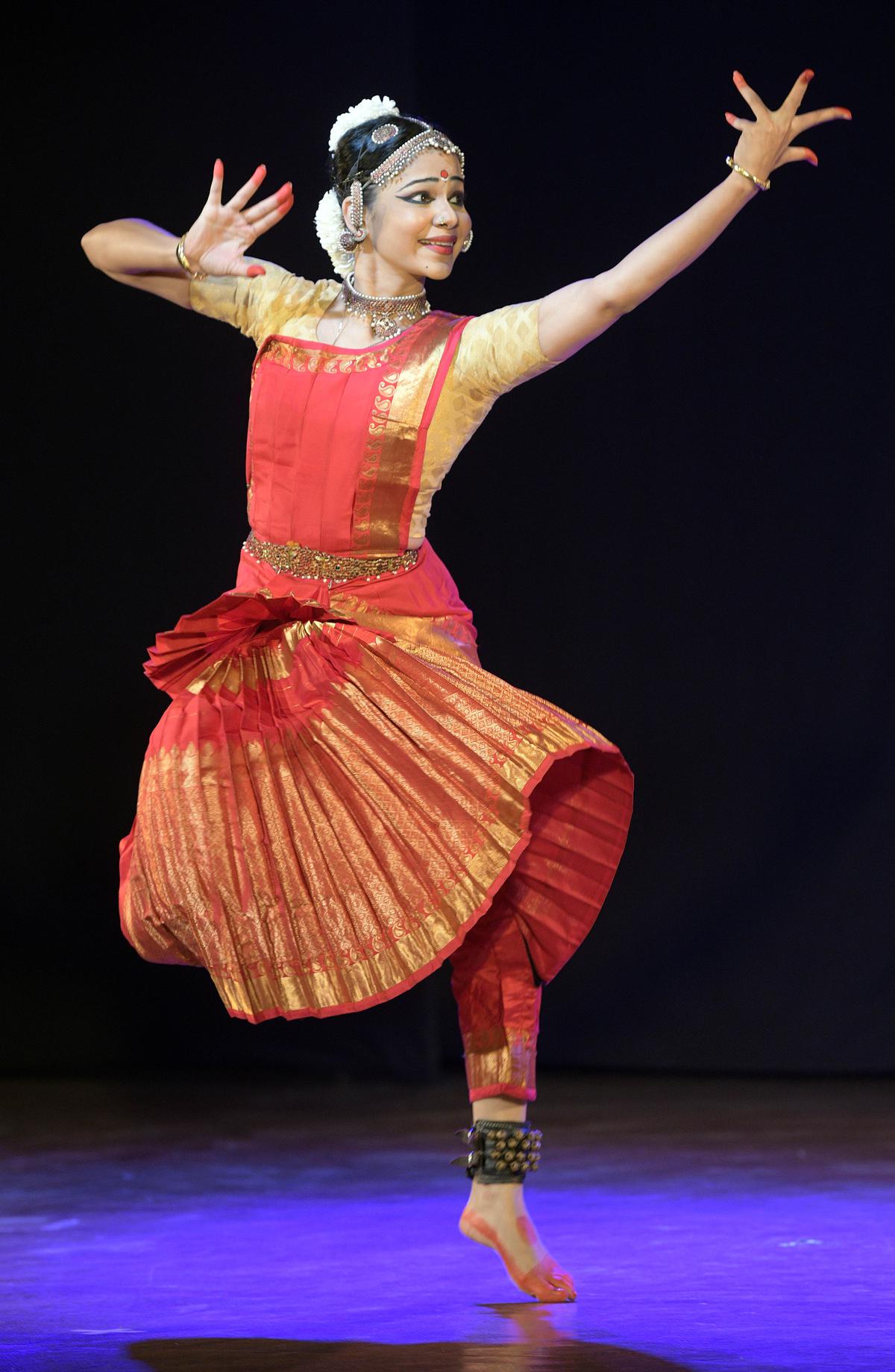At a time when most Indian children were being steered towards learning classical dance or music, or at least trained to play an instrument, it seemed natural for Sreelatha Vinod’s parents to nudge her towards dance when they found a dance school called Natya Vihar in their neighbourhood. It was started by actor Hemamalini’s father. Natya Vihar had one of the finest dance gurus — Tanjai Arunachalam Pillai — and it was under him that Sreelatha began her journey.
The intensive training and Sreelatha’s passion led to her arangetram early on. Sreelatha recalls that dance classes were something she looked forward to, and the gentle but strict guru taught all the technicalities and nuances of Bharatnatyam.
Among the many cherished moments of performing, Sreelatha fondly remembers receiving a medal from the legendary Sivaji Ganesan when she was about five years old. When she was just settling into a routine of learning and practice, her guru became unwell. He was hardly able to take classes, but was so committed that he continued.

Bharatanatyam performance by Sreelatha Vinod at Sri Krishna Gana Sabha in Chennai. in 2017.
| Photo Credit:
PICHUMANI K
It was also around this time that the far-sighted Arunachalam Pillai decided to start a dance school to bring all dancers under one umbrella. He sent a letter inviting dancers and gurus to meet. This laid the foundation for ABHAI (Association of Bharatanatyam Artistes of India). But, Pillai did not live to see the movement take off.
Soon, Sreelatha’s next chapter of training in Bharatanatyam began with her second gurus, the Dhananjeyans.
Sreelatha says this shift was not easy for her, because not only did she have to unlearn and then relearn techniques under teachers from another school, she also missed the singular attention she had basked in, under Pillai’s tutelage. She soon discovered that the Dhananjeyans, who were performing gurus, were much sought-after. They had already established Bharatakalanjali and so, whenever they travelled, they saw to it that training did not suffer. The senior-most students were put in charge, and it was thus that Radhika Shurajit began to take classes for Sreelatha. But the young girl was not happy. She showed her displeasure, which Radhika was quick to notice. Sreelatha admits that while it was easy for her to touch the feet of her guru before and after the class, she would just touch the talam and not bow to the stand-in guru.
When the Dhananjeyans returned from their performance tour, Sreelatha had a big lecture waiting for her. Shanta Dhananjayan sat her down and told her the importance of respecting the chair, and the person who occupied it. That changed something in her.
“I am quite ashamed of who I was as a young girl. I understood that better when I became a teacher. But Radhika never bore a grudge, nor did her gurus, and that was one of the first “out-of-class-lessons” that Sreelatha learnt in Bharatakalanjali.
The second lesson was to follow. The Dhananjayans came out with their production of Sangamitra and Sreelatha was chosen for it. But she was disappointed when told to play a small role. Grudgingly, she performed. After that, Dhananjeyan called her. “You have let me down. The role, be it small or big, is not important. How you perform is — it is not what you do, but how you do it that affects the scene,” he said.
That was Sreelatha’s first lesson in Patra Pravesham and she admits, “my first lesson in humility as well”.
Soon enough, great opportunities came her way and she worked with commitment, a fact her gurus acknowledged.
The Dhananjeyans gave space to their students to grow. Like many others, she found herself participating in several productions, each of which taught her valuable lessons in choreography, music composition, costumes and overall presentation.
She especially remembers being a part of ‘Ghanshyam’ which gave her an opportunity to see the creative mind and work dynamics of sitarist Pt. Ravi Shankar.
With experience, she was asked to choreograph small pieces. “The biggest award I got for my choreographic skills was when my guru performed ‘Alarulu Guriyaga’, for which I had choreographed. Their acknowledgement in public served as a validation of my talent.” Today, Sreelatha has choreographed over 25 thematic shows.
For someone who idolised her first guru, the transition to the new gurus also happened organically. How and when the shift happened, Sreelatha is not able to define, but says she revelled in the blessings of two sets of gurus. She says that while Dhananjeyan looked at the larger picture, Shantha got down to little details. They complemented each other. “It was from akka that I learnt how to iron my costume, air it, re-fold it and put it away with care, something that I practise to this day. It was this attention to detail that inspired me,” says Sreelatha, who has completed her masters in History and Bharatnatyam, and holds a PhD in Bharatanatyam from Tamil University [Adavus -a study]. A Kalaimamani awardee, she is a faculty member at Dr J Jayalalitha Music and Fine Arts University and established the Anthara Centre for Performing Arts.
Inspired by her guru Arunachalam Pillai’s vision of ABHAI, she started Prayathnam with a group of like-minded young dancers, and as its president and managing trustee, encourages and supports the purpose of learning — reading texts, sourcing study material, creating a syllabus that would help students and train teachers as well. It was through Prayatnam that she had the opportunity once again to interact with several other gurus, and to serve as a bridge between her two loves — history and dance.
Stay connected with us on social media platform for instant update click here to join our Twitter, & Facebook
We are now on Telegram. Click here to join our channel (@TechiUpdate) and stay updated with the latest Technology headlines.
For all the latest Entertainment News Click Here
For the latest news and updates, follow us on Google News.
